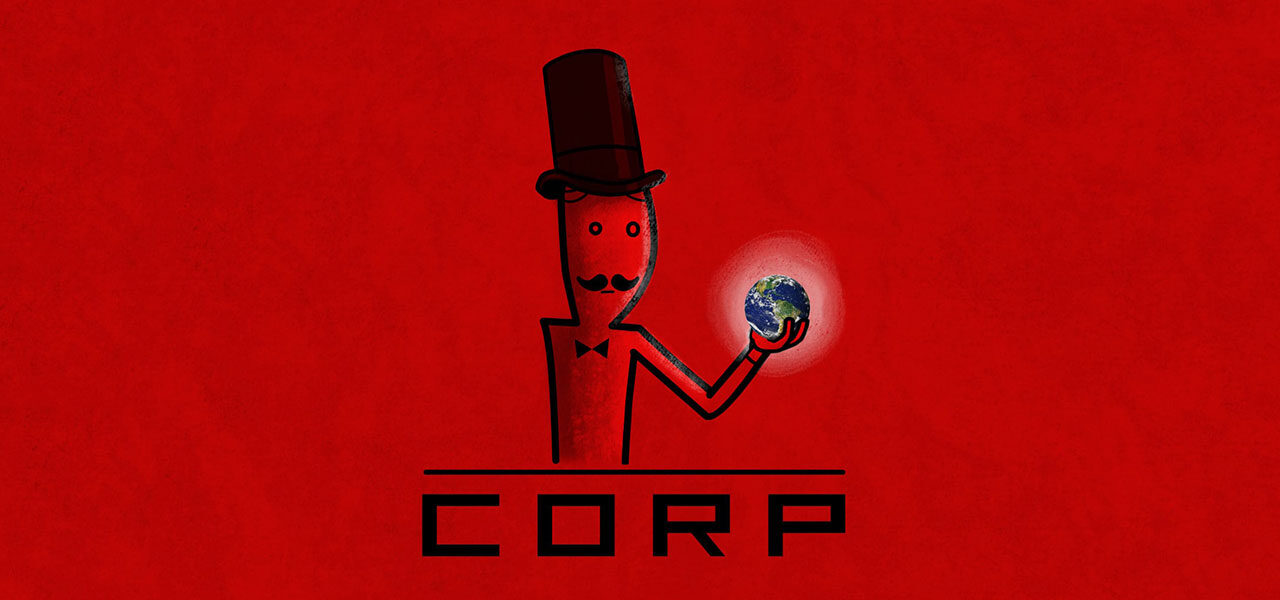
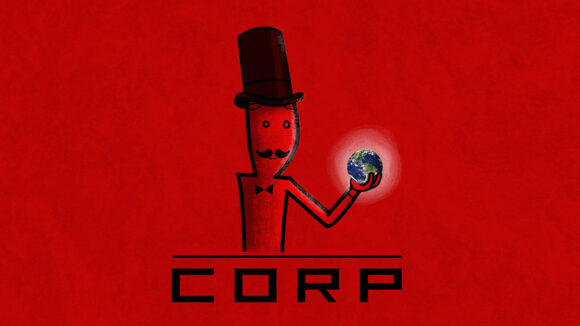
Exclusive Short Film Premiere: ‘Corp.’ by Pablo Polledri
Corp. tells a tale of rampant capitalism, political corruption, environmental ruin, sexual misconduct, and more. And it does so in less than nine minutes, with nary a word spoken (unless you count gibberish).
Welcome to the streamlined satire of Pablo Polledri, an animator and illustrator based in Buenos Aires, Argentina. Having sent up everything from religion to smoking in previous films, Polledri sets his sights on capitalism in Corp. (2016), which Cartoon Brew is premiering exclusively. Watch the film below:
Polledri has directed several independent short films, as well as commissioned work for clients including Coca-Cola and Disney — which has positioned him on the fringes of the corporate culture he critiques in Corp. His background in motion graphics comes through in the film’s schematic design: its strength lies in how it uses basic shapes and iconic characters to convey complex ideas.
Below, Polledri tells us how he came up with the concept for the film, how he developed its deceptively simple look, and why this story reminded him of the Bible…
Cartoon Brew: Was Corp. inspired by a specific incident or company?
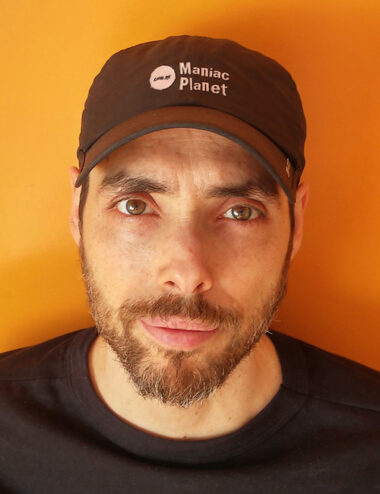
Pablo Polledri: The first flash of the idea arose in a conversation, in which a friend told me about a person who was trying to get a promotion, and for that he spoke badly about his colleagues. I started to imagine that person inside an organization chart sawing a colleague’s rectangle, and I thought that could be a good device to talk about corporations.
Companies, through brand positioning, end up being a concept in our minds. I found the idea of an organization chart attractive because it stripped the company of precisely all that abstract construction to show people working, making products, making decisions, being part of this with more or less influence.
The short film is based on the idea of greed. I began to gather certain aspects that I was interested in highlighting, such as labor exploitation, corruption, ecological impact, and people working off the books. I combined situations from my own working experience, and my personal feelings about corporations, with situations that I was compiling through different media.
The image that inspired the short film, of the man trying to make a colleague “fall,” ended up being a small detail in this short film. It can be observed very briefly in a camera movement.
You wrote, animated, and scored the film by yourself. How did you develop it — where did you begin?
Generally, when an idea appears I develop it using drawings and character sketches, as well as writing some concepts and describing some actions. In the case of Corp., I tried to identify those actions that the company takes that could have an impact on its environment and the relationships that this action promotes. For example, when highlighting the environmental impact that a company can generate, it seemed interesting to me to include the role of the government, which is the one who should regulate it.
Once I gathered the topics I wanted to develop, I linked them to the growth of the company. I had already defined that the company was going to have constant growth, so I was situating the different issues according to the size of the company. For example, in small companies it is quite common to have unregistered employees. Therefore this item had to be included at the beginning of the story.
I defined the visual style and started animating before I’d finished the entire script (including the ending) and without a storyboard. As the animation process takes time, I was confident that I would finish defining everything in the course of the first few scenes. Working alone obviously has its limitations, but it also gives you some freedom. While animation requires planning, this approach allows some improvisation.
I animated from the beginning of the story to the end. This project required the animation of the characters’ actions and the organization chart to be coordinated, since the film works in some ways as a sequence shot where the action is becoming more and more complex, and therefore the animation too. Working in this way, despite not having it completely planned, turned out to be entirely organic.
Generally, while I am animating, I am thinking about the type of sounds that I would like to include and defining the sensations that I would like to transmit at the same time. So once the animation was finished, I tried to reinforce those feelings through the sound design and music.
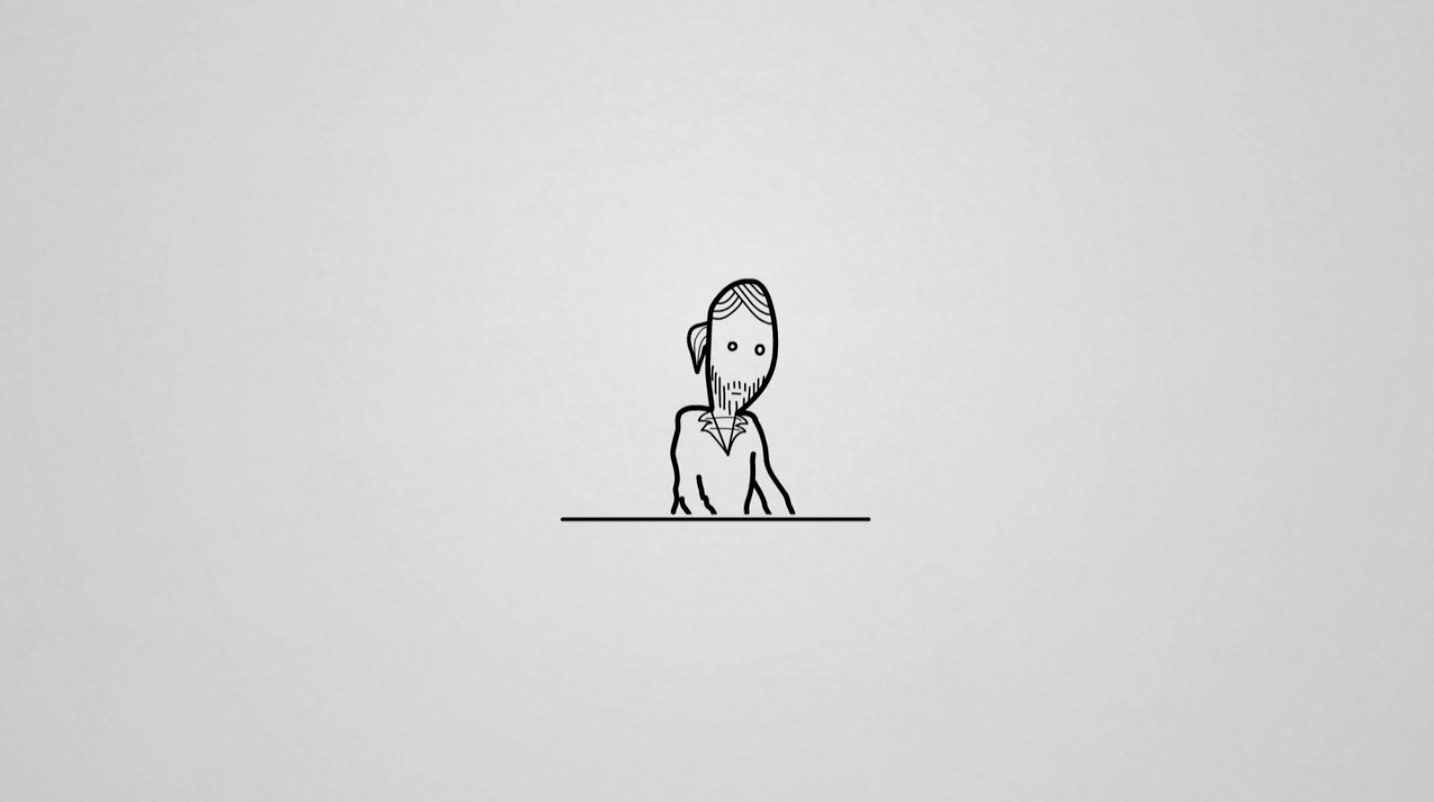
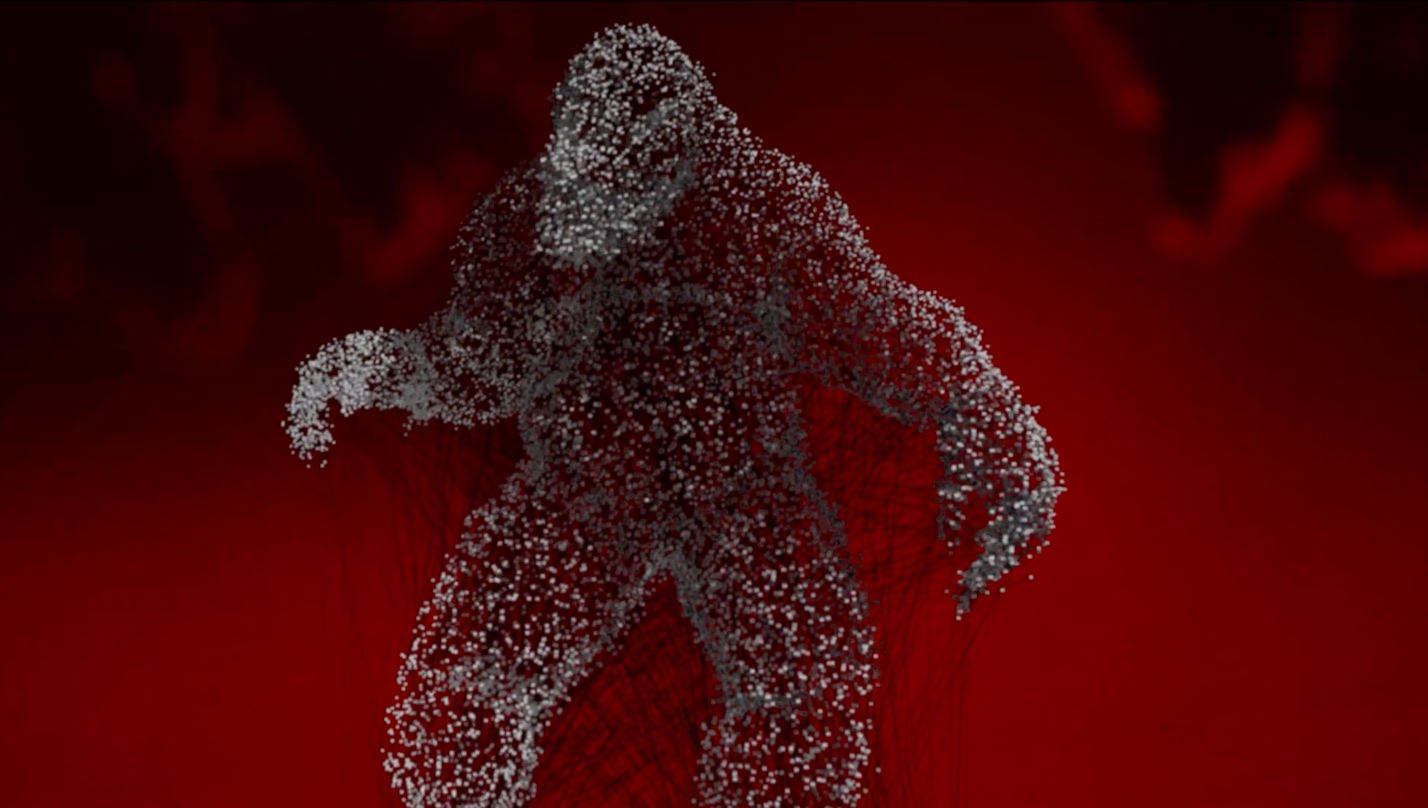
The film tackles complex themes through very simple shapes and symbols. Was this visual architecture in place from the start, or did you come up with it gradually?
I knew from the beginning that the visual style was going to be very simple. An organization chart looks unattractive, so I aimed to give the film strength in the way I executed that narrative, in the themes, and in the growth of the story. Regarding the design of the characters: although at first I tried some variants, I quickly decided that they were going to be iconic. I considered that this worked better with the overall scheme.
The chosen themes were difficult to express, especially in a short film without dialogue. They are very intangible themes, and one of the most complicated things was finding a way to capture them through these simple forms. But each solution that I found felt like it helped to make the story more attractive and didactic.
In addition, conceptually, it created a contrast: as the plot progressed from these simple forms to something more complex, this reflected the growing impact that this corporation was generating as it expanded.
You do commercial work. How has this part of your career shaped your understanding of the corporate world?
My career experience has made me feel sure about certain conceptions I had about the corporate world, but it also surely broadened that vision. Both my experiences and the research I did confirmed to me that companies have a strong impact on many aspects of our lives. They are where we work (or who we work for) and who we do business with. We consume their products or services.
Companies are diverse, but they agree that their purpose is profit. How this is achieved will differ in each corporation. The subject has many facets, but I think the worrying thing is when, on some occasions, business relationships are placed above human relationships, and businesses end up taking actions that in another context would be illogical.
For example, if a company plans obsolescence in its products, the focus is only on generating more income without taking into account the effectiveness of a responsible production that contributes to a more sustainable consumption. Over time, these business strategies become broader and more established. I believe that commercial interests should be tied to promoting public wellness.
The companies in the film are named Adan and Eva — Adam and Eve. Why did you choose to link your narrative to the biblical story?
The idea of this organization chart works in a way like an organism that is brought to life, step by step, by all the workers there. At the end of the short film this becomes more evident. It is through this concept that I hit upon an analogy with biblical genesis. Just as that tells the story of the creation that gives rise to the human being, my story is like the creation that gives rise to the corporation.
In this case, paradise is the possibility of living peacefully on the planet, where nature provides us with everything we need to live well and calmly. But just as Adam and Eve lose it, so do we. Paradise is where we live already: we have what we need to enjoy it, but we can lose everything through greed. We are the “creators” who determine whether this will happen.

.png)